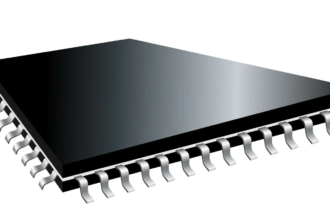The industrial sector today faces the challenge of bringing new equipment into existing systems without slowing things down. Companies need to move fast but also stay reliable, because delays can hurt productivity and profits. Adaptive power solutions, like overhead busway systems, offer a modern way to deliver power. They make installations quicker and safer, helping businesses stay on track.
These systems are modular and easy to reconfigure. They make installation smoother and cut down on downtime and extra costs. Businesses that use them often find it easier to stay competitive, especially when adopting flexible power solutions that streamline distribution and simplify future adjustments.
Eliminating Bottlenecks with Busway Systems
Scalable power distribution, such as a Track Busway system, is changing how companies manage overhead power. These systems simplify connections and allow power feeds to be moved without extensive rewiring. Plug-in tap-off boxes can be placed anywhere along the busway, giving teams instant access to electricity where it’s needed most. This adaptability shortens setup times, keeps production on track, and reduces the complexity of electrical work.
Power distribution units can be repositioned with minimal effort, making adjustments seamless when equipment or layouts change. With this flexibility, operations continue without disruption, helping businesses maintain efficiency. Reviewing your current setup could highlight opportunities to speed up workflows and improve overall performance.
Reducing Installation Downtime with Pre-Configured Power Systems
Pre-configured power modules make installation much simpler. These modules come in standardized busway segments that are designed for quick assembly, typically including integrated connectors that snap into place without extra tools. There’s no need to wait around for custom wiring, so new machinery can be up and running much faster. What used to be a long, slow task becomes quick and efficient, with many installations completed within a single shift.
Plug-and-play connections make things even easier. Equipment can often be operational within just a few hours. This reduces the need for specialized electricians, giving teams more control over their projects and cutting down on labor costs. Adding pre-configured power systems might reveal new ways to save time and money in future installations.
Adapting to Variable Power Demands Without Major Upgrades
Scalable power distribution systems are great for handling changing power needs. They let facilities adjust power in real time as equipment demands shift. There’s no waiting around like with traditional fixed electrical panels. This kind of flexibility makes it easier to install or upgrade equipment without slowing things down. Many systems offer load monitoring features, allowing teams to track energy usage and make adjustments to avoid overloading circuits.
These systems are simple to move and adjust without complicated redesigns. As power needs change, facilities can make quick adjustments without starting over. Taking a closer look at your power distribution setup might uncover chances to respond faster and work more efficiently.
Minimizing Costs Related to Electrical Reconfiguration
Adaptive power solutions help cut costs on electrical installations. Using a single busway system reduces material and labor expenses by eliminating the need for custom cable trays and individual conduits. Fewer components mean less waste, making both the initial setup and later changes easier and cheaper. In many cases, teams can install an entire section of busway in a single day, significantly speeding up project timelines.
Fast deployment is another plus. It avoids the long delays that usually drive up costs. A faster installation keeps production going, which helps maintain revenue. Looking at adaptive power solutions could lead to real savings, especially when it comes to cutting the costs of reconfiguration.
Improving Workplace Safety During Equipment Installation
Overhead power systems improve safety by keeping cables and connections off the ground. This design helps prevent tripping hazards, making it safer for employees who need to move around the workspace. With cables out of the way, accidents are less likely, and people can focus on their jobs without having to watch their step.
Moving away from fixed conduit systems also reduces risks. Less exposed wiring means lower chances of electrical exposure during changes or upgrades. Faster equipment setups mean workers spend less time near live components, which further lowers the risk of accidents. Prioritizing safety during equipment installation creates a more secure and efficient work environment.
Busway systems make it easier for businesses to power their equipment without slowing things down. Their modular design cuts installation time, reduces downtime, and helps save on labor costs. Pre-built modules and plug-and-play connections let teams set things up fast, often without needing an electrician. These systems are flexible, so it’s simple to adjust power as equipment changes. Overhead setups keep cables off the floor, lowering the risk of accidents. If your current system feels slow or costly, switching to busway systems could speed things up, cut expenses, and help your team stay focused on getting work done.














